
- The Visionary Design of Gaudí: Unfinished Masterpieces and Their Impact
- Exploring the Spiritual Significance of the Unfinished Sagrada Família
- The Architectural Innovations of Gaudí in the Sagrada Família
- Cultural and Historical Context of the Unfinished Sagrada Família
- The Future of the Sagrada Família: Will it Ever Be Completed?
- A Pilgrimage to Gaudí's Unfinished Masterpiece: Visitor Insights and Experiences
The Sagrada Família in Barcelona stands as a testament to the visionary genius of Antoni Gaudí, whose unique architectural style has captivated the world for over a century. Despite its ongoing construction, this basilica is a symbol of innovation and creativity, reflecting the harmony between nature and religion.
Known as the **Unfinished Sagrada Família: Gaudí's Masterpiece**, the basilica's intricate design and monumental scale continue to inspire awe. As work progresses towards its anticipated completion in the coming decades, the structure remains an enduring legacy of Gaudí's artistic ambition and spiritual devotion.
The Visionary Design of Gaudí: Unfinished Masterpieces and Their Impact
Antoni Gaudí's visionary design transcends traditional architectural boundaries, as evidenced by his *unfinished masterpieces*. The Sagrada Família, along with structures like Casa Batlló and Park Güell, showcase his **innovative approach** to integrating organic forms and vibrant colors. Each piece reflects his deep reverence for nature and spirituality, which continues to influence modern architecture.
The impact of Gaudí's designs is profound and far-reaching. His ability to harness natural elements resulted in buildings that are not merely functional but also evoke emotion and wonder. Key aspects of his design philosophy include:
- Naturalism: Incorporating organic shapes and patterns.
- Structural Innovation: Utilizing catenary arches and hyperbolic paraboloids.
- Symbolism: Infusing religious and cultural meanings into architectural details.
Despite their unfinished status, these masterpieces have sparked a global architectural movement that embraces creativity and sustainability. Gaudí's work invites architects and artists to rethink the relationship between the built environment and the natural world, emphasizing that **beauty and functionality can coexist harmoniously**. This legacy continues to inspire new generations, encouraging a reevaluation of conventional design principles.
In the broader context of architectural history, Gaudí's unfinished Sagrada Família serves as a metaphor for the perpetual journey of creativity. The ongoing construction not only reflects the **visionary ambition** of its creator but also symbolizes the evolving nature of art and architecture, where each phase of development adds layers of meaning and depth to the masterpiece.
Exploring the Spiritual Significance of the Unfinished Sagrada Família
Exploring the spiritual significance of the unfinished Sagrada Família reveals a profound connection between architecture and faith. Gaudí envisioned this basilica not merely as a building but as a living testament to Christian beliefs, where every element serves a purpose that transcends the physical. The interplay of light and shadow within the structure symbolizes the divine presence, inviting visitors to reflect on their spiritual journeys.
The design elements of the Sagrada Família echo themes of redemption and sacredness, transforming the basilica into a space of worship and contemplation. Key architectural features that contribute to its spiritual ambiance include:
- Flying Buttresses: Representing support and strength in faith.
- Colorful Stained Glass: Creating a kaleidoscope of light that inspires awe.
- Natural Forms: Connecting the divine to the beauty of creation.
The ongoing construction of the Sagrada Família adds layers of meaning to its spiritual significance. Each new stone laid is a step towards fulfilling Gaudí's vision, embodying the idea that faith and artistry are intertwined. This unfinished masterpiece serves as a metaphor for the continual pursuit of spiritual enlightenment, suggesting that the journey is as important as the destination.
In essence, the unfinished Sagrada Família stands as a beacon of hope and faith, encouraging individuals to embrace their spiritual paths. It reflects a communal effort, with each contribution from craftsmen and visitors alike reinforcing the connection between humanity and the divine. This remarkable interplay of art and spirituality ultimately makes the Sagrada Família a unique pilgrimage site for those seeking deeper understanding and connection.
The Architectural Innovations of Gaudí in the Sagrada Família
Antoni Gaudí's architectural innovations in the Sagrada Família are groundbreaking, blending artistic expression with advanced engineering techniques. His use of hyperbolic paraboloids and catenary arches not only enhances the aesthetic appeal but also improves structural stability. These techniques allow for the creation of soaring ceilings and intricate facades that mimic natural forms, showcasing Gaudí's deep respect for nature.
Key innovations include:
- Organic Geometry: Gaudí's designs are inspired by natural shapes, resulting in fluid lines and forms that resemble those found in nature.
- Innovative Materials: The use of reinforced concrete and ceramics allowed for bold designs that were previously unattainable in traditional architecture.
- Light Play: Strategic placement of windows and openings creates dynamic lighting effects that change throughout the day, enhancing the spiritual experience within the basilica.
Furthermore, Gaudí employed a unique construction method that involved building in layers, allowing for continuous adaptation and evolution of the design. This approach has led to a living architectural masterpiece, where each phase of construction adds new dimensions and interpretations to the original vision. The resulting interplay of structural strength and artistic beauty is a hallmark of Gaudí's work, making the Sagrada Família an enduring symbol of architectural innovation.
In summary, the Sagrada Família exemplifies Gaudí's extraordinary ability to fuse art with science. His pioneering techniques not only set new standards for architectural design but also invite viewers to engage with the structure on multiple levels, both aesthetically and spiritually. As the basilica continues to evolve, it remains a testament to Gaudí's legacy and his impact on modern architecture.
Cultural and Historical Context of the Unfinished Sagrada Família
The cultural and historical context of the unfinished Sagrada Família is deeply intertwined with the social and political changes that shaped Barcelona during the late 19th and early 20th centuries. Gaudí began his work on the basilica in 1882, a time when the city was undergoing rapid industrialization and urban expansion. This period saw a burgeoning interest in Catalan nationalism, which influenced Gaudí’s vision, as he sought to create a uniquely Catalan expression of religious architecture.
Furthermore, the Sagrada Família was conceived during a time of significant religious fervor, with a growing desire for monumental sacred spaces. The basilica's design not only reflects Gaudí's architectural genius but also embodies the spiritual aspirations of the Catholic Church and the local community. Key influences on the project included:
- Neo-Gothic Revival: A movement that sought to revive medieval Gothic architecture, deeply influencing Gaudí's early designs.
- Modernisme Movement: A Catalan cultural renaissance that embraced innovative design and craftsmanship, which Gaudí epitomized.
- Religious Symbolism: The integration of Christian iconography in the structure's elaborate facades and interior elements.
Despite being unfinished, the Sagrada Família has evolved into a cultural landmark, representing not only Gaudí's architectural ambitions but also the collective identity of Barcelona. The ongoing construction has sparked a global interest in the basilica, turning it into a pilgrimage site for visitors seeking to understand the intersection of art, faith, and cultural heritage. Each addition to the church reflects the ongoing dialogue between past traditions and contemporary interpretations of spirituality and artistry.
As the Sagrada Família continues to rise towards completion, it serves as a living monument to the enduring spirit of creativity and devotion. The project exemplifies how architecture can encapsulate the complexities of its time, making it a vital part of the historical narrative of Barcelona and a symbol of the city's unique identity. Ultimately, the unfinished Sagrada Família stands as a testament to the legacy of Gaudí, inspiring future generations to appreciate the profound connection between culture, history, and architectural innovation.
The Future of the Sagrada Família: Will it Ever Be Completed?
The future of the Sagrada Família remains a topic of debate among architectural enthusiasts and historians. With an estimated completion date set for **2026**, coinciding with the centennial of Gaudí's death, many wonder if this ambitious timeline is realistic. Factors such as funding, craftsmanship, and evolving construction techniques significantly influence this timeline, highlighting the challenges of completing such a monumental work. As construction continues, the aspirations of Gaudí's original vision remain a guiding force for the artisans involved.
Advancements in technology and construction methods may play a vital role in expediting the completion of the Sagrada Família. Modern tools allow for more precise construction and replication of Gaudí's complex forms, potentially speeding up the process. However, the dedication to maintaining the integrity of Gaudí's original designs means that every new addition is subject to meticulous scrutiny, ensuring that it aligns with the masterpiece's artistic intent. This careful approach underscores the commitment to preserving the basilica's historical and cultural significance.
Public interest and funding for the ongoing construction also affect the future of the Sagrada Família. The basilica attracts millions of visitors each year, generating revenue that supports its completion. Additionally, the project has garnered international attention, inspiring donations and investments aimed at fulfilling Gaudí's vision. The collaborative effort between local authorities, craftsmen, and the global community highlights a shared commitment to see this architectural marvel completed.
Ultimately, whether the Sagrada Família will ever be fully completed remains uncertain. Its ongoing construction embodies the idea that art and architecture can evolve over time, reflecting various phases of cultural expression and innovation. Each stone laid represents not just a step towards completion, but a continuation of a legacy that transcends generations, making the basilica a living testament to the enduring power of creativity and faith.
A Pilgrimage to Gaudí's Unfinished Masterpiece: Visitor Insights and Experiences
A pilgrimage to Gaudí's unfinished masterpiece, the Sagrada Família, offers visitors a unique opportunity to connect with architectural history and spiritual significance. Many travelers describe their experiences as transformative, often highlighting the basilica's stunning facades and intricate details. Visitors are encouraged to engage with the site through various means, such as:
- Guided Tours: Expert insights into Gaudí's vision and the basilica's evolution.
- Audio Guides: Personal narratives that deepen the understanding of architectural elements.
- Workshops: Hands-on experiences that explore Gaudí's techniques and philosophies.
As visitors walk through the Sagrada Família, they often express feelings of wonder and reverence. The interplay of light through the stained glass creates a mesmerizing atmosphere, drawing attention to the intricate spiritual symbols embedded within the architecture. Many find themselves reflecting on their own beliefs and values, making the visit not just a sightseeing excursion, but a spiritual journey as well. Common sentiments among pilgrims include:
- Inspiration: A sense of creativity ignited by Gaudí's innovative designs.
- Connection: A feeling of unity with the global community of visitors sharing the same experience.
- Reflection: An opportunity to ponder personal spirituality and the significance of faith.
Visitor insights reveal that the Sagrada Família is not merely a tourist attraction but a profound pilgrimage site where art and spirituality converge. Many guests return multiple times, each visit unveiling new layers of meaning and appreciation for Gaudí's artistic genius. The basilica's unfinished status serves as a reminder of the ongoing journey of both the construction and one's personal spiritual exploration, encouraging visitors to embrace the process of seeking understanding and connection.
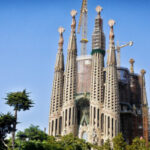 The Exquisite Masterpiece: La Sagrada Familia in Barcelona Reaches Completion Date
The Exquisite Masterpiece: La Sagrada Familia in Barcelona Reaches Completion Date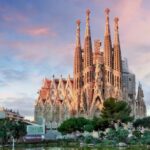 Sagrada Familia Barcelona Tickets: Your Guide to Exploring Gaudí's Masterpiece
Sagrada Familia Barcelona Tickets: Your Guide to Exploring Gaudí's Masterpiece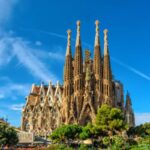 The Fascinating History of Barcelona's Sagrada Familia
The Fascinating History of Barcelona's Sagrada Familia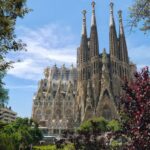 Why Sagrada Familia Was Built: Unraveling the Fascinating Purpose Behind Gaudí's Masterpiece
Why Sagrada Familia Was Built: Unraveling the Fascinating Purpose Behind Gaudí's Masterpiece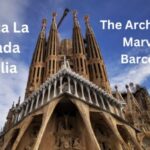 Discover the Architectural Marvel of Barcelona with a Sagrada Familia Walking Tour
Discover the Architectural Marvel of Barcelona with a Sagrada Familia Walking TourIf you want to know other articles similar to Unfinished Sagrada Família: Gaudí's Masterpiece you can visit the category Sagrada Familia.
Deja una respuesta

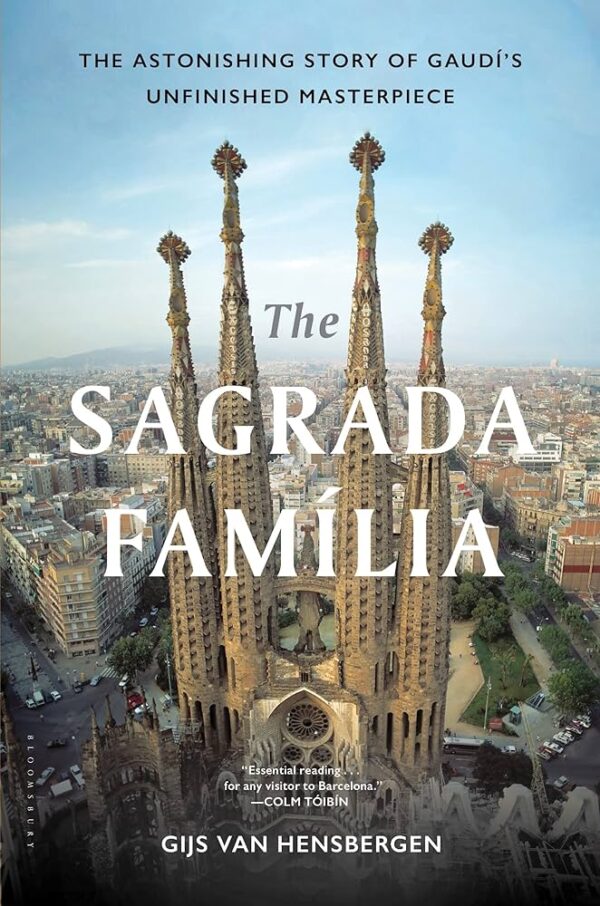
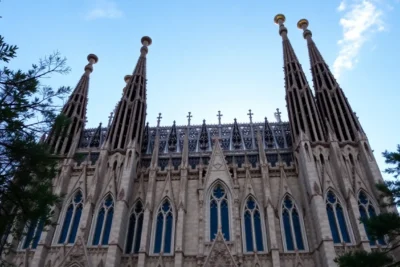
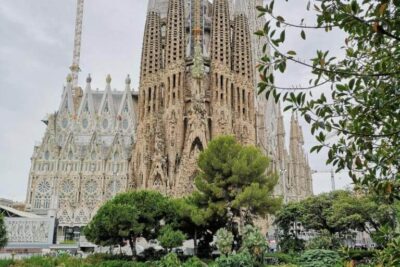
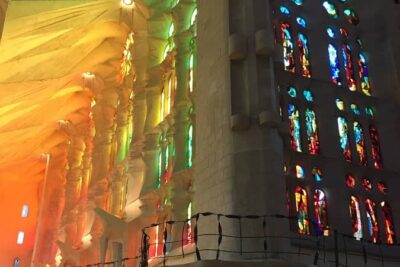
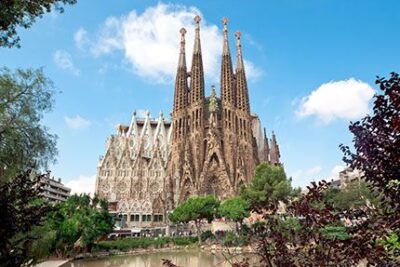
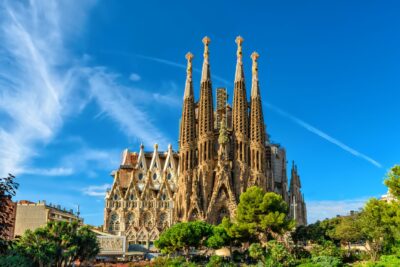
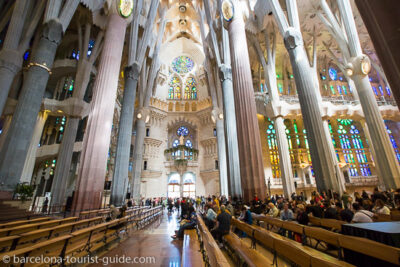
Read more!